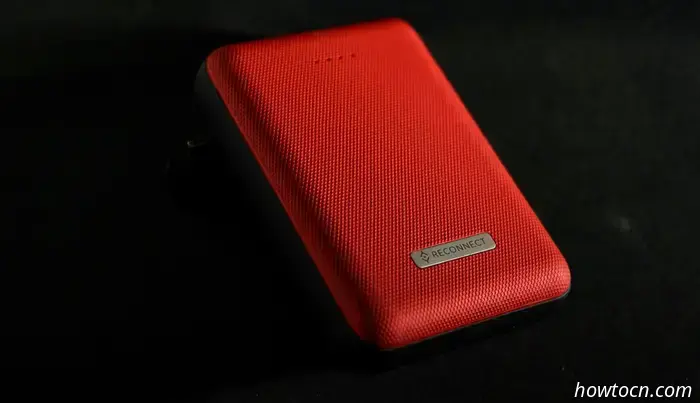
Last week, we provided some advice and addressed common questions regarding travel in light of China's new power bank regulations. However, China is not the only country making changes. There is a clear global trend where airlines and regulatory authorities worldwide are reassessing and revising their safety regulations related to traveling with power banks.
This week, we will present some of the revised air travel guidelines concerning power banks from various airlines and regulatory agencies globally.
Recent International Power Bank Air Travel Updates
Below is a summary of some of the latest modified guidelines related to power banks from international airlines or regulatory organizations. Please be aware that this information is not an exhaustive list covering every country, airline, agency, or policy. For the most comprehensive, accurate, and current details regarding a specific airline or agency, please visit their website or reach out to them directly.
South Korea
The destruction of an Air Busan aircraft in January of this year due to a suspected fire from a malfunctioning power bank led the South Korean government to require passengers to keep their portable power banks "within arm's reach" at all times during flights, prohibiting storage in overhead bins.
Chinese Mainland and Taiwan
CAAC China-Wide Guidance: The CAAC has recently declared that as of July 28, 2025, passengers on domestic flights are barred from bringing power banks that lack the "3C" label, possess unclear or counterfeit 3C labels, or have been recalled.
EVA Air and China Airlines: Passengers are not allowed to use or charge their power banks during flights, although power banks may be stored in overhead bins.
Hong Kong
The Civil Aviation Department (CAD) has mandated local airlines to prevent passengers from recharging power banks or using them to charge personal devices in-flight. Storage of power banks in overhead bins during the flight is also prohibited.
Japan
The Ministry of Land, Infrastructure, Transportation, and Tourism has collaborated with the Scheduled Airlines Association of Japan (SAAJ) to issue a new directive banning the storage of power banks in overhead bins. Passengers may use and charge their power banks during flights, but only in visible, easily accessible locations that can be continuously monitored. Power banks have already been prohibited from checked luggage. These new rules apply to all 19 member airlines of the SAAJ:
Japan Airlines (JAL)
All Nippon Airways (ANA)
Peach Aviation
Jetstar Japan
Zipair Tokyo
Nippon Cargo Airlines (NCA)
Japan Transocean Air (JTA)
Japan Air Commuter (JAC)
Air Do
Air Japan
Solaseed Air
Starflyer
ANA Wings
J-Air
Skymark Airlines
Fuji Dream Airlines (FDA)
Spring Airlines Japan
IBEX Airlines
Hokkaido Air System
The updated rules are effective for both domestic and international flights to and from Japan.
Singapore Airlines
Passengers are not permitted to charge power banks via the airplane's USB ports or use them to charge personal devices at any point during the flight.
Thai Airways
The use of power banks on the aircraft is not allowed.
Malaysia
Malaysia Airlines: Passengers must keep their power banks with them at all times. Power banks cannot be placed in overhead compartments but may be stored in a passenger's carry-on item under the seat in front or in the seat-back pockets. The use or charging of power banks during the flight is not allowed, and they cannot be taken in checked luggage. The airline also notes: “Magnetic wireless charging power banks should be carried in a separate bag or protective pouch to avoid accidental activation.”
AirAsia: Passengers are prohibited from using or charging power banks during the flight. Power banks must not be stored in overhead compartments and should instead be held in hand, placed in the seat-back pocket in front, or kept under the seat in front. They are also not allowed in checked luggage.
Ryanair
Power banks, along with other lithium batteries, must be taken out of bags stored in overhead compartments.
Southwest Airlines
Devices stored in overhead bins may not be charged using power banks or portable batteries. The airline specifies that the use of power banks during a flight must take place “out of your bag and in plain sight.”
IATA Regulations
The International Air Transport Association has stated the following:
Spare batteries must be individually protected to prevent short circuits by either remaining in their original packaging or insulating terminals, e.g., taping over exposed terminals or placing each battery in a separate plastic bag or protective pouch, and they should be carried in carry-on baggage only.
Items containing lithium cells or batteries, primarily designed to provide power to another device, like power banks, are classified as spare batteries and are restricted to carry-on baggage only.
Batteries must comply with the requirements outlined in the UN Manual of Tests and Criteria, Part III, subsection 38.3.
Further information from the IATA regarding this matter can be found on their website or in the following documents
This week, we examine the latest guidelines regarding power banks for air travel from various airlines and regulatory bodies globally.